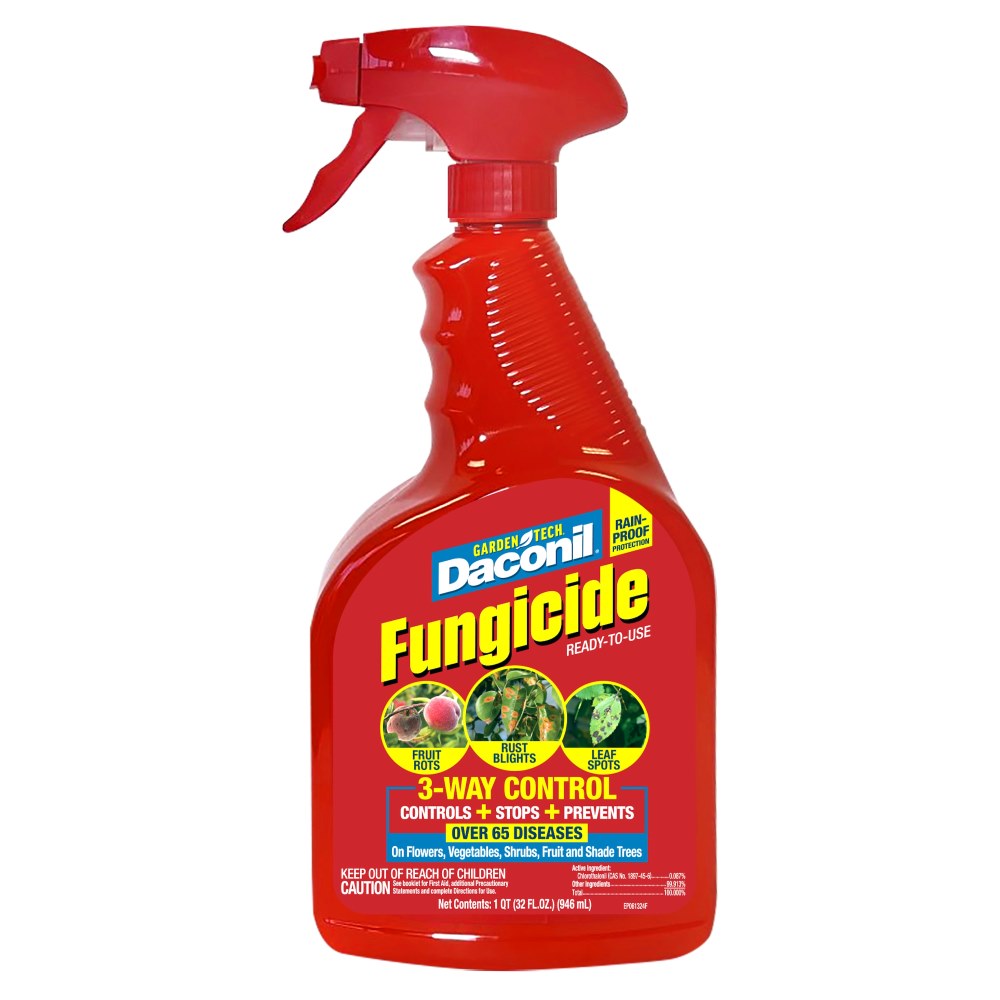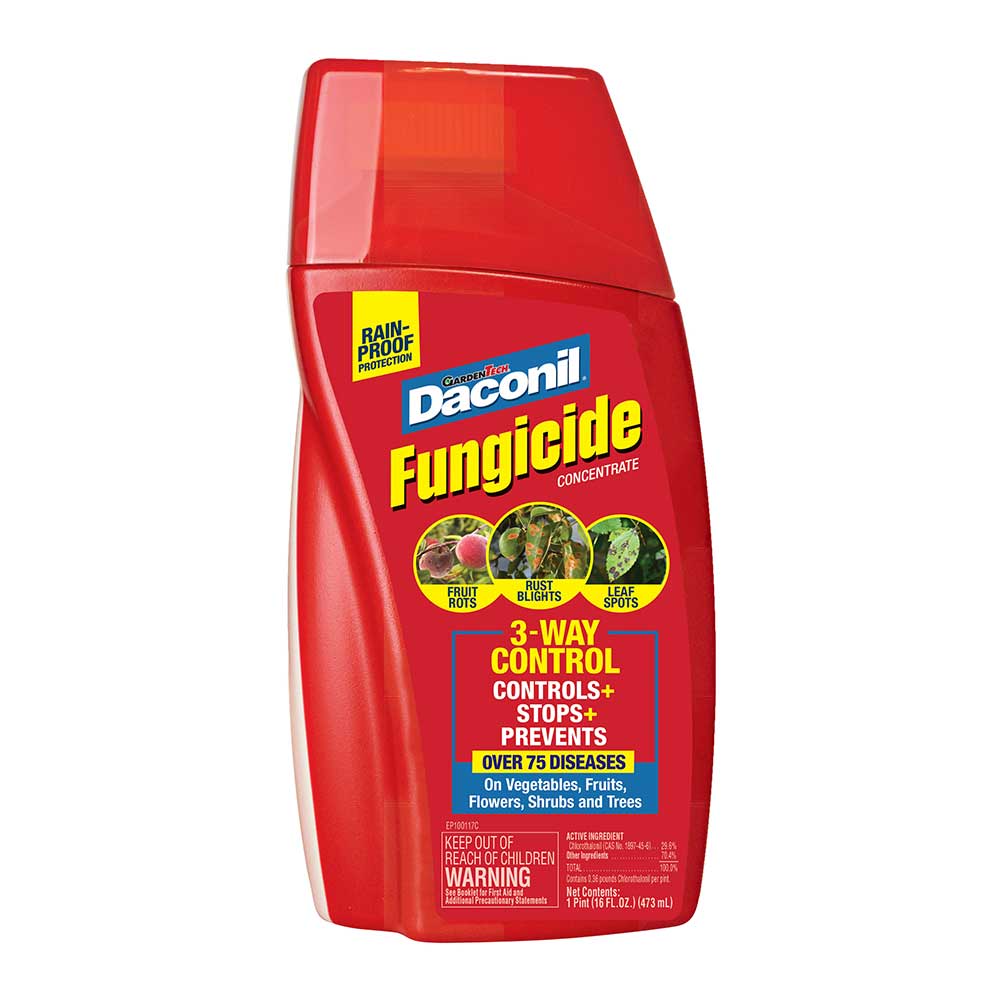Gummy Stem Blight
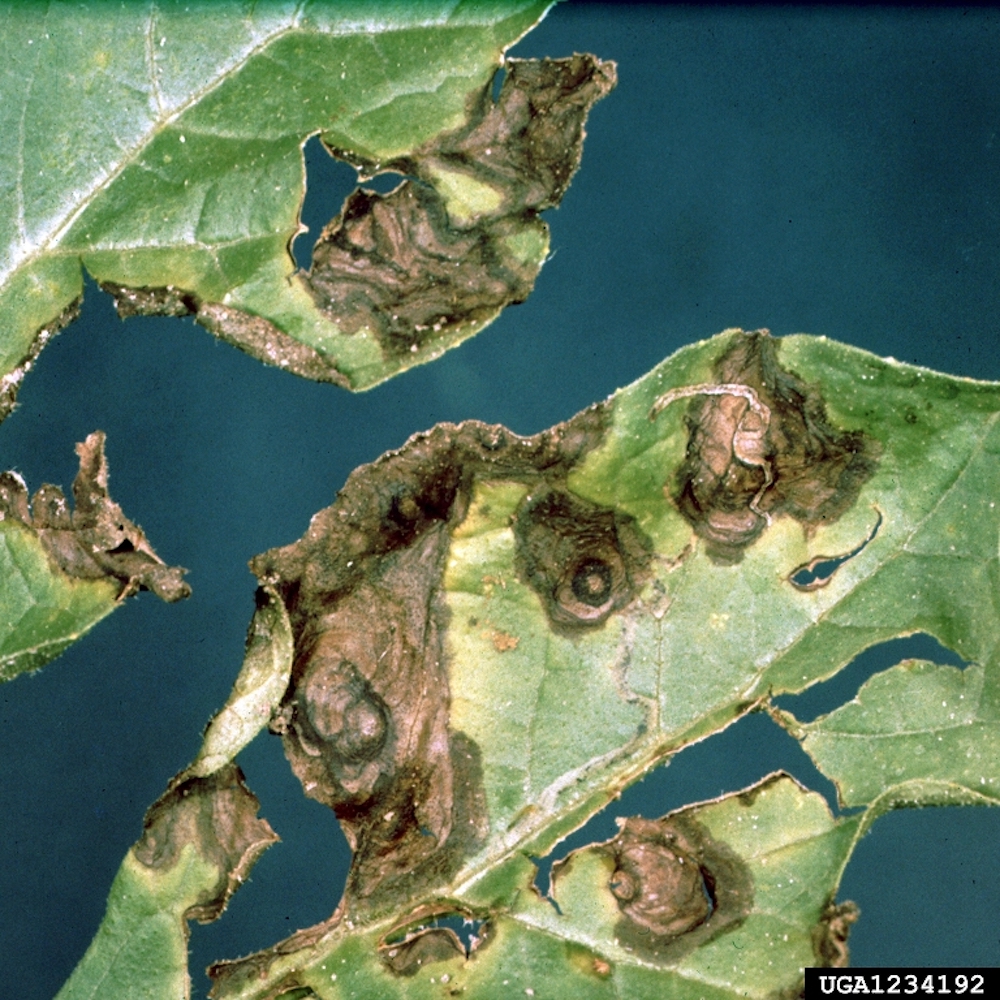

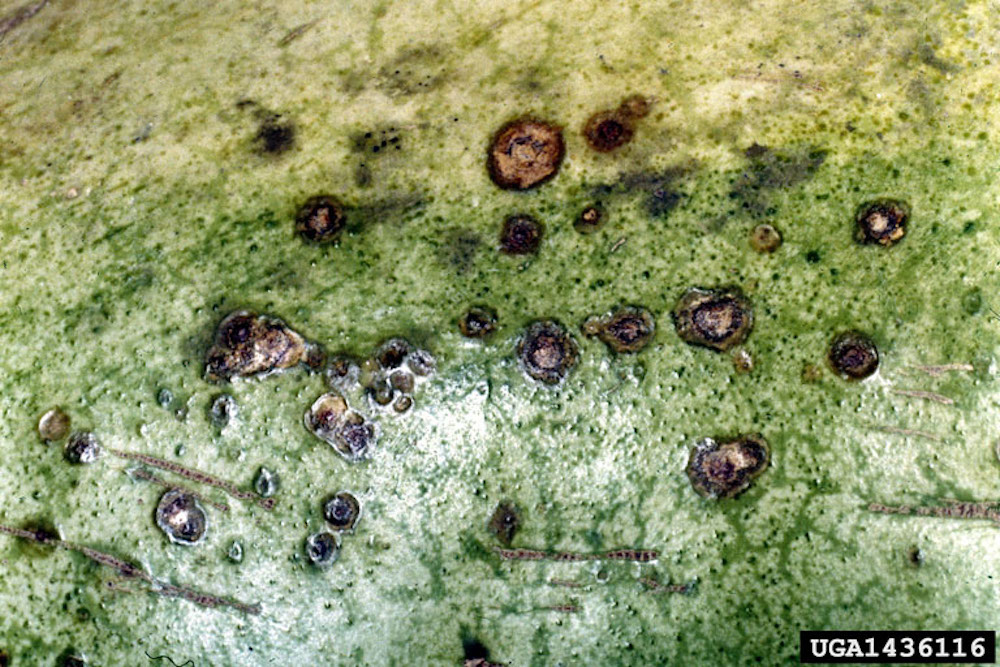
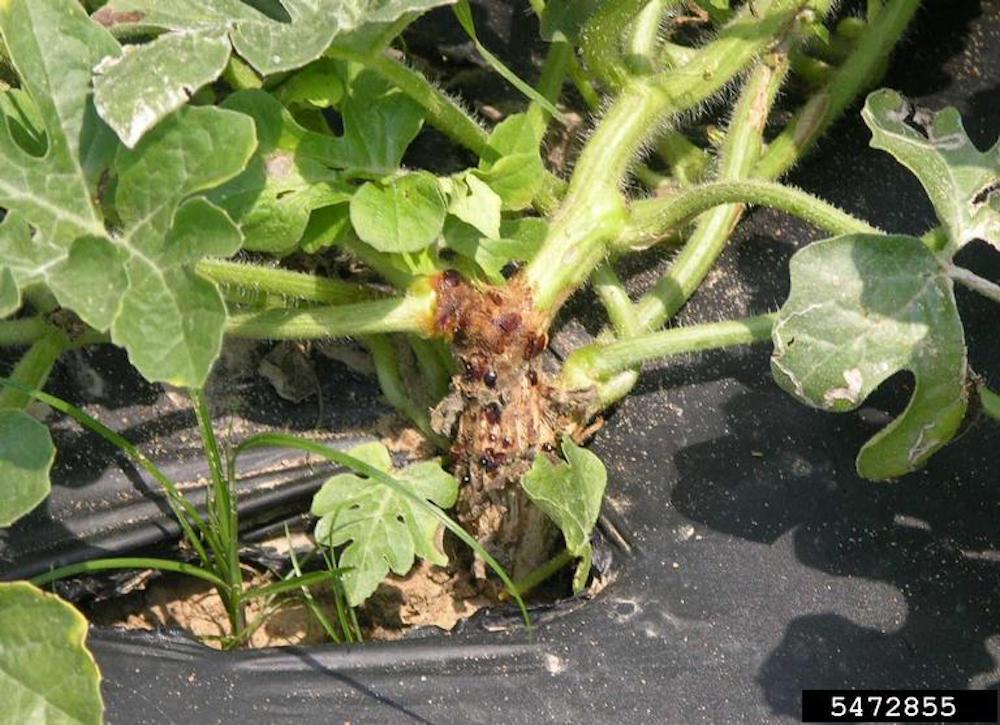
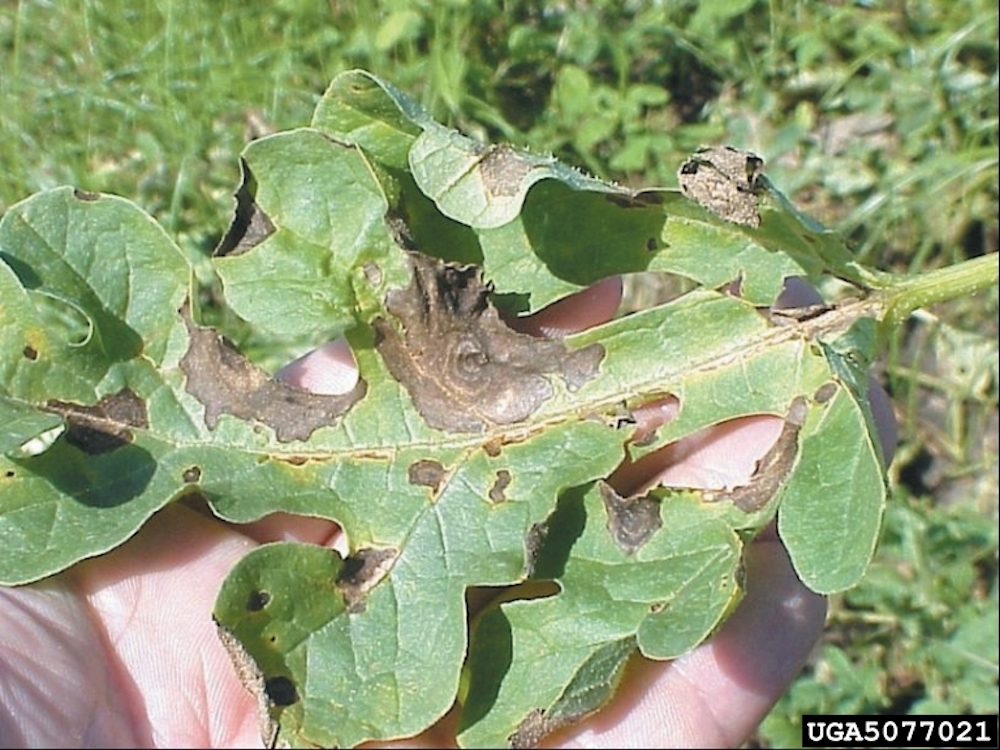
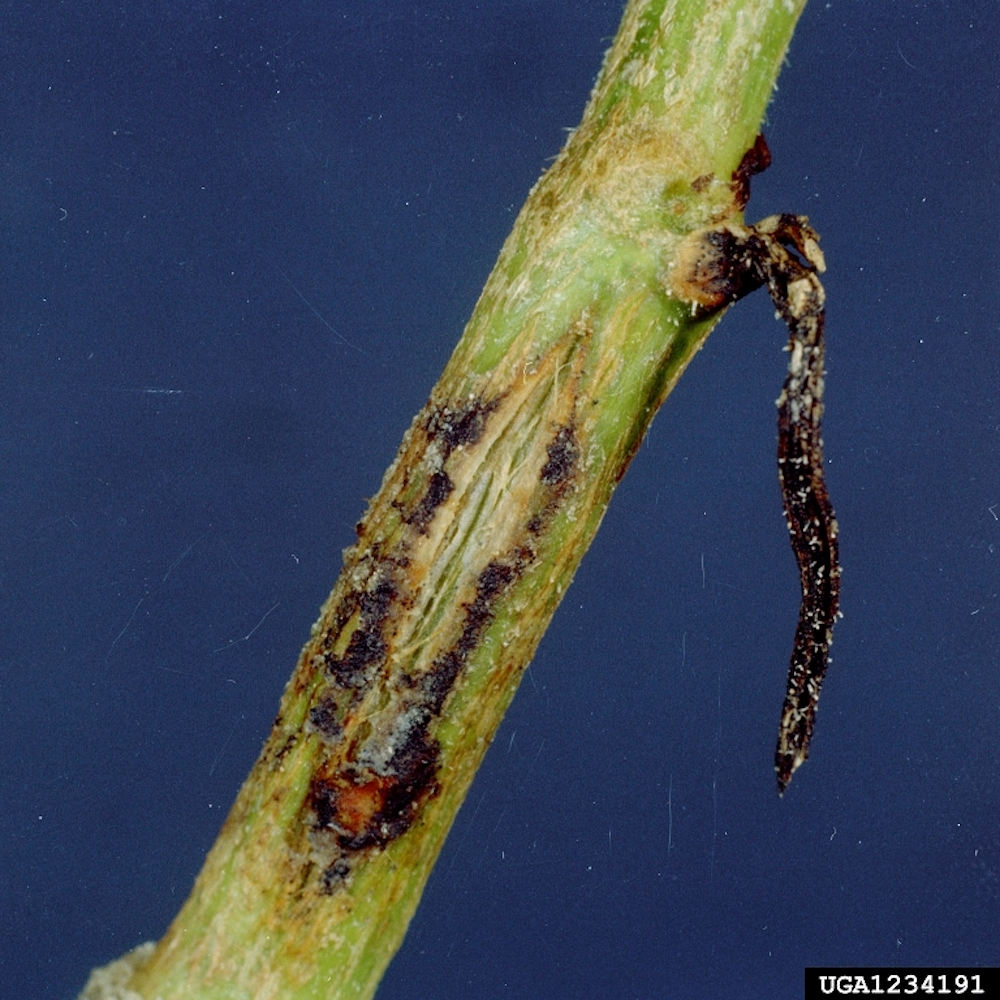
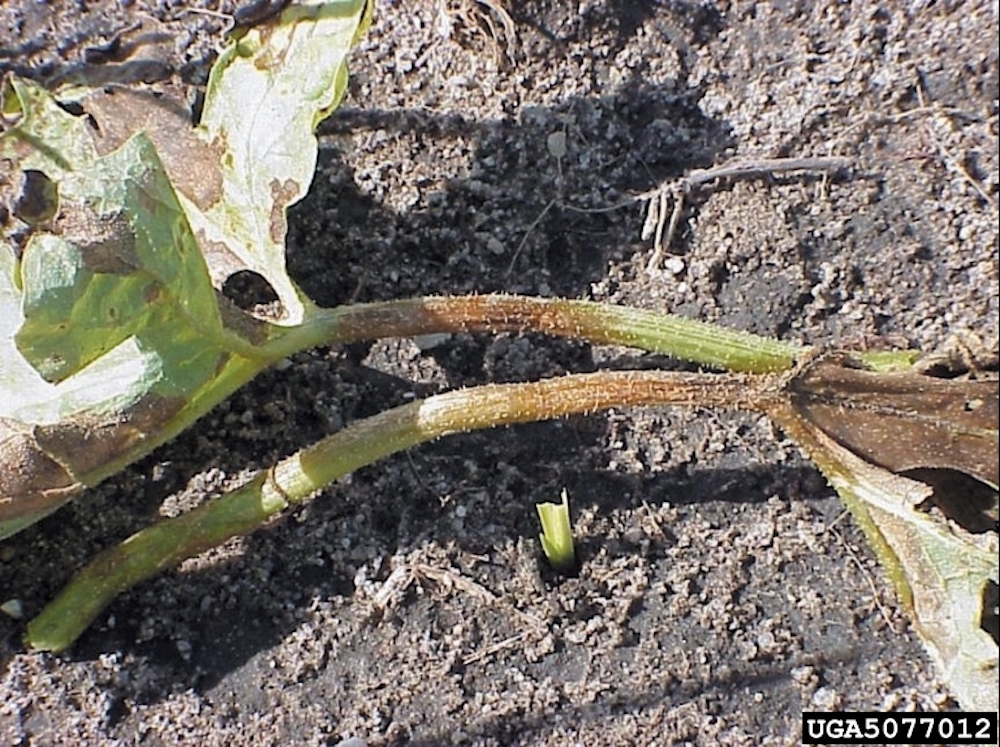
Plants in the cucurbit family include cucumbers, melons, pumpkins, and squash — some of America's favorite garden crops. But everywhere these crops grow in the United States, a disease known as gummy stem blight attacks cucurbit stems and leaves. When the fungi move to cucurbit fruit, this common disease is known as black rot.
Gummy stem blight spreads by infected seed and soil. High humidity and moisture combined with moderate warmth encourage its germination. Splashing water from irrigation or rainfall adds to its spread. Insects such as aphids and cucumber beetles do their part by creating tiny wounds the fungi infiltrate and infect. Powdery mildew predisposes cucurbits to gummy stem blight disease.
Gummy Stem Blight Identification/Symptoms
When gummy stem blight strikes, stems develop dark, water-soaked lesions. Stems may split and secrete drops of gummy, reddish brown ooze. Leaves display brown-black, water-soaked spots formed from concentric rings. Close inspection of stems or leaves reveals small, black, reproductive fungal dots. Water-soaked spots on infected fruits turn to areas of blackened rot.
How to Control Gummy Stem Blight
Early intervention and preventive treatments help reduce the risk of serious crop loss to gummy stem blight. Daconil fungicides from GardenTech brand offer highly effective three-way protection to prevent, stop, and control gummy stem blight and more than 65 other diseases, including powdery mildew.
Start treatments when cucurbit plants reach the first true leaf stage or when conditions favor the disease. These fungicides treat cucumbers, melons, pumpkins, and squash right up to harvest day:
- Daconil Fungicide Ready-To-Use simplifies targeted treatments for small gardens and individual plants, whether tucked in edible landscapes or grown in containers. Simply shake the grab-and-go spray bottle and spray all upper and lower plant surfaces until thoroughly wet.
- Daconil Fungicide Concentrate provides an economical option for larger gardens. Measure the recommended concentrate amount into a hand-held, hose-end, or tank-style sprayer with the convenient measuring cap. Add the recommended amount of water, mix well, and spray all plant surfaces to the point of runoff.
Increase gummy stem blight control by treating cucumber beetles and aphids with Sevin Insect Killer Ready to Spray and Sevin Insect Killer Concentrate liquids or Sevin Insect Killer Dust Ready to Use. Follow label guidelines for minimum intervals between treating insects with these pesticides and harvesting your cucurbit crops.
Gummy Stem Blight Control Tip: Never save seed from cucurbits affected by gummy stem blight. Start with seed from trusted, disease-free sources instead. Allow two years between plantings of cucurbits in the same garden area. Gummy stem blight fungi overwinter on infected crop debris, so remove all vines and clean your garden well each year.
Always read product labels thoroughly and follow instructions, including guidelines for treatable plants, application rates and frequencies and pre-harvest intervals (PHI) for edible crops.
Daconil is a registered trademark of GB Biosciences Corp.
GardenTech is a registered trademark of Gulfstream Home and Garden, Inc.
Sevin is a registered trademark of Tessenderlo Kerley, Inc.
Photo Credit:
Clemson University - USDA Cooperative Extension Slide Series, Bugwood.org (CC BY 3.0 US)
Clemson University - USDA Cooperative Extension Slide Series, Bugwood.org (CC BY 3.0 US)
Clemson University - USDA Cooperative Extension Slide Series, Bugwood.org (CC BY 3.0 US)
Don Ferrin, Louisiana State University Agricultural Center, Bugwood.org (CC BY 3.0 US)
David B. Langston, University of Georgia, Bugwood.org (CC BY 3.0 US)
David B. Langston, University of Georgia, Bugwood.org (CC BY 3.0 US)


